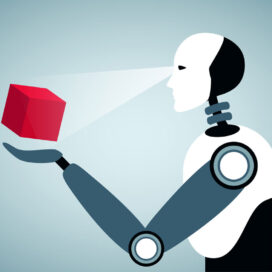A Look At Uber’s Ambitions For A Driverless Future
Published: September 17, 2016 / Author: NPR, All Things Considered

The ride-hailing firm Uber began testing driverless cars in Pittsburgh this week. Professor and author Timothy Carone discusses the technology and risks of driverless Uber vehicles.
MICHEL MARTIN, HOST:
If you catch an Uber in Pittsburgh, there’s a chance your driver may not actually drive. That’s because driverless Ubers hit the streets in Pittsburgh as of Wednesday. To be clear, the ride-sharing service does have humans in the front seat to make sure everything goes smoothly. We wanted to find out more about the future of this technology and the risks, so we’ve called on Timothy Carone. He’s a professor at the University of Notre Dame, and he wrote the book “Future Automation: Changes To Lives And To Businesses.” and he’s with us now. Thank you so much for joining us.
TIMOTHY CARONE: Thank you for having me, Michel.
MARTIN: So people might have a picture in their mind about self-driving cars. Before we get into the details, can you just tell us a little bit about where the technology is now compared to what people might imagine?
CARONE: Well, the technology is at a – I’ll call it a hyper cruise control, where cars can control their driving and their movement down basic, you know, either highways or streets with traffic lights and kind of the normal pedestrian traffic. So you think about kind of the normal traffic patterns you encounter, say, driving to work.
The cars are getting good enough to handle those situations. What they don’t do is they’re not capable of true autonomous operations. They cannot – you cannot get into a car today and tell it where to go and then sit back, fall asleep for three hours when it takes you to work. That kind of capability is not present.
Read or listen to the entire story on the NPR website.
Related Stories




